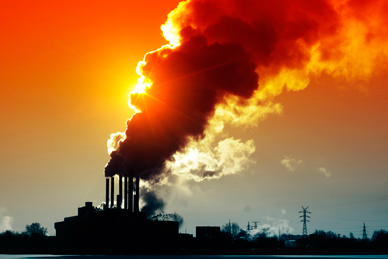- Dr Lucio Cañete, professor at the Technological Faculty of Universidad de Santiago, thinks that the State should promote the development of technology to capture harmful greenhouse gases like carbon dioxide, to support what forests and oceans naturally do.
The problem of global warming has caused severe changes in ecosystems, like desertification and the melting of glaciers, and has placed countries all over the world in a bind.
Last December, 187 countries gathered at the 2015 United Nations Climate Change Conference (COP 21) held in Paris, France. They committed to establish mechanisms to limit the temperature increase and reduce the emissions of greenhouse gases like carbon dioxide (CO2).
According to Dr Lucio Cañete, professor at the Technological Faculty of Universidad de Santiago, climate change has always existed, but in the past, it was caused by natural phenomena.
“The planet’s climate has always changed for the continental drift, variations in the Earth’s rotation axis, massive volcanic eruptions, among others,” the expert explains.
However, the substantial presence of CO2 in the atmosphere has pushed climate change to alarming levels, where the excess energy accumulated in the environment has resulted in the melting of glaciers, desertification and the rising of ocean levels.
“Measurements in weather stations around the world have shown that the average temperature of the planet has increased by 0.8°C, and that ice masses have decreased and sea levels have increased about 25 cm,” Dr Cañete explains.
Capture of CO2
Although the expert thinks that it is essential for countries to propose changes in this matter, he thinks that efforts should be made not only to reduce emissions but also to provide tools to capture what is polluting the ecosystem.
“Even if all countries in the world decided not to release more CO2 into the atmosphere, the natural system of the Earth would take at least seventy years to absorb the excess energy,” Dr Cañete says. Today, only forests and oceans do that work, “therefore, returning to ‘normal’ temperatures would take long.”
This is the reason why Dr Cañete thinks that the State should promote the development of technology to capture harmful greenhouse gases.
He says that in spite of the current neglect, “there are quite enough new initiatives focused on artificially generating plants which are able to efficiently capture CO2. These plants will be able to grow in desert areas.”
In this regard, the State should provide tax incentives to organizations that promote afforestation “to contribute to the capture of CO2 in order to reduce global warming,” he says.
Universidad de Santiago de Chile is doing its part. According to the expert, “at the university, we are proposing initiatives, like a special tax treatment (land tax) for companies, organizations and universities with large green areas. If they have many vigorously growing plants and trees, it means that they are capturing CO2.”
He concludes that it is necessary to change the existing paradigm and understand that, to address global warming, both reducing and capturing greenhouse gases are equally important.
Translated by Marcela Contreras



